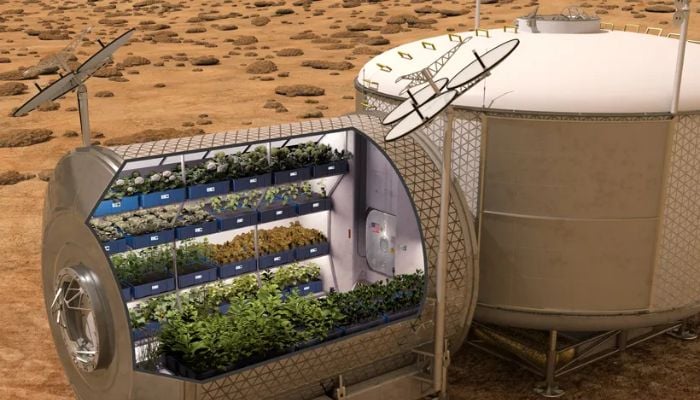Researchers have found that rice plants can grow in the simulated Martian soil that contains perchlorate, a chemical that is harmful to plant life (SN: 4/18/20).
This discovery could lead the way for future space exploration missions to Mars. Read on to learn more about this interesting topic. This article has been adapted from one originally published by MENAFN.
1. Rice is a staple food on Earth
While potatoes may be what Matt Damon’s character grew in The Martian, new research suggests that rice could actually be better suited for Mars. Researchers have found that rice can grow in simulated Martian soil.
The team grew genetically modified rice plants in a Martian soil simulant made from basaltic rocks mined from the Mojave Desert, as well as regular potting soil and a mixture of the two. They then compared the growth of the edited and wild-type plants.
2. Rice is a resilient crop
For more than half the world’s population, rice is a staple food. It is also the main source of income for millions of farmers.
To help them keep their rice bowls full, researchers are breeding new varieties that can endure stressors like drought, floods and salt. These climate-smart crops can also cut water waste and reduce greenhouse gas emissions from rice cultivation.
3. Rice can grow in simulated Martian soil
With the distance between Earth and Mars at around 300 million miles and their only close encounter occurring every couple of years, future first colonists of Mars will need to cultivate their own food. The latest research, presented at the 54th Lunar and Planetary Science Conference, suggests that genetically modified rice could be the answer.
Researchers grew two different varieties of rice, including one wild variety and one gene-edited version that’s more resilient to stressors like drought, in simulated Martian soil with perchlorate.
4. Rice can grow in simulated Martian soil with perchlorate
In order for humankind to successfully colonize Mars, we will need to learn how to grow food there. Scientists have been conducting research on how to cultivate plants on alien soil.
They grew one wild rice variety and two gene-edited strains that were more resistant to stress situations like drought, lack of sugar, and salinity. They tried growing them in pure potting soil and in mixtures with Martian soil simulant sourced from basalt mined in the Mojave desert.
5. Rice can grow in simulated Martian soil with salt
If humanity is going to make it into space, we need a way to grow plants. A team of researchers at the University of Arkansas has shown that genetically modified rice can grow in simulated Martian soil.
The scientists grew wild-type and two gene-edited strains of rice in basaltic-rich soil developed by NASA and the Jet Propulsion Laboratory to simulate Mars regolith. They found that replacing a quarter of the regolith with potting soil improved plant growth.
6. Rice can grow in simulated Martian soil with water
When humans colonize Mars, they will need to grow crops that can withstand the planet’s harsh conditions. One of the biggest challenges is perchlorate salts, which have been detected in the planet’s soil and are generally considered to be toxic for plants.
Researchers at the University of Arkansas grew rice in simulated Martian soil, which is made from basaltic-rich dirt mined from the Mojave Desert. They tested three varieties of rice, including two gene-edited strains that are better adapted to drought, sugar starvation and salinity.
7. Rice can grow in simulated Martian soil with oxidants
Researchers from the University of Arkansas have shown that rice can grow in simulated Martian soil with oxidants. This is an important step towards the goal of cultivating a crop that can grow on Mars.
The team grew three varieties of rice—two wild types and one gene-edited strain that is better adapted to stress. They compared them to plants grown in a normal potted mix and the Mars simulant.
8. Rice can grow in simulated Martian soil with nitrates
Scientists at the University of Arkansas have found that genetically modified rice can grow in simulated Martian soil. Their research, presented at the 54th Lunar and Planetary Science Conference, suggests that the first settlers of Mars will be able to grow their own food, reducing the need for expensive and complex resupply missions.
The researchers grew wild-type and two gene-edited strains of rice in basaltic Mars simulant mined from the Mojave Desert. They found that replacing just 25 percent of the soil with potting soil resulted in improved growth.
9. Rice can grow in simulated Martian soil with nitrogen
While the potatoes-and-feces recipe suggested by Andy Weir in his book The Martian may sound like a joke, new research suggests that genetically modified rice could one day grow on Mars. Researchers at the University of Arkansas grew three different varieties of rice one wild type and two gene-edited varieties that have mutations to better respond to stress in a Mars soil simulant made from basaltic dirt mined in the Mojave Desert.
10. Rice can grow in simulated Martian soil with potassium
Like the soil on Mars, simulated Martian dirt has essential nutrients for rice to grow in. The research paves the way for future missions to Mars, as it would allow astronauts to cultivate their own food without the need for costly resupply flights.
To test this, scientists from the University of Arkansas grew one wild rice variety and two cultivars with a genetic mutation that improves resilience against stressors, including drought. They tested the plants in simulated Mars soil with and without perchlorate.
